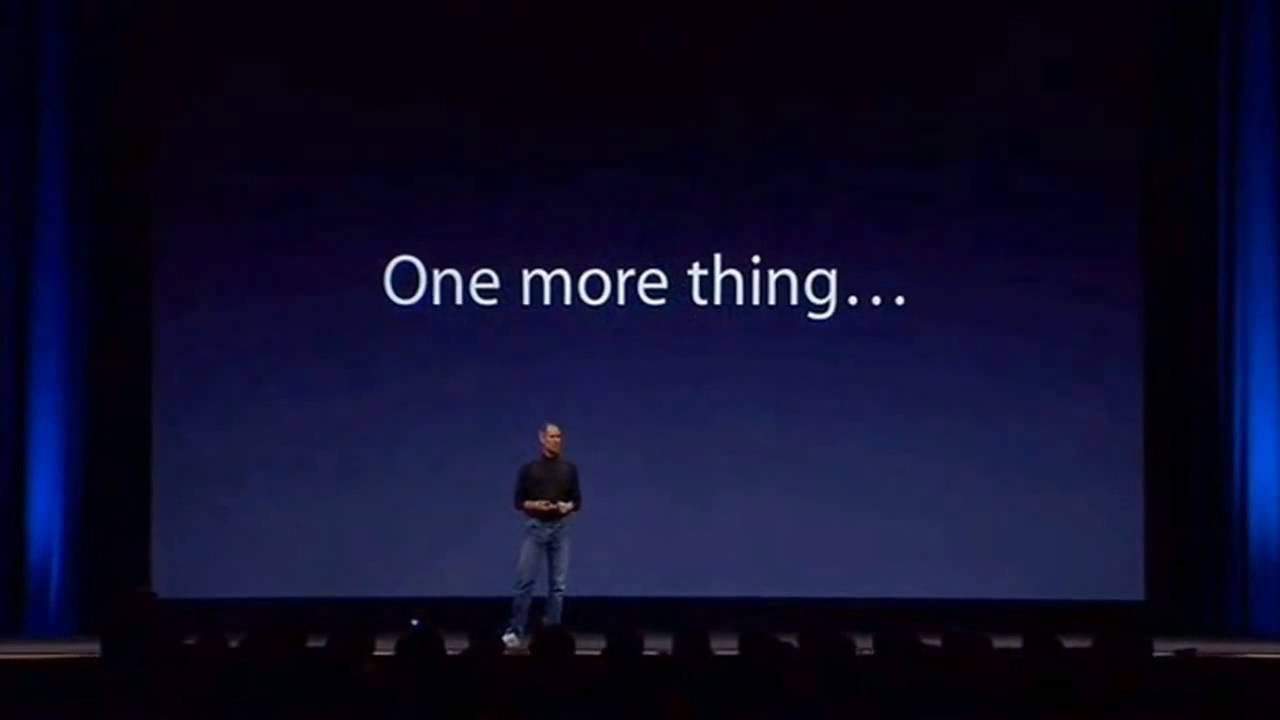It’s been more than a week since the shocking news that Jony Ive is leaving Apple, and everyone is still trying to make sense of what it means for the company’s future.
According to some, it’s an internal coup: Tim Cook’s operations team finally wrested control from Ive’s industrial design crew, and the company‘s glory days of innovation are over. Others claim Ive’s days have been numbered ever since his dream of a solid gold Apple Watch flopped.
How can there be so many conflicting accounts of one man’s departure? Surprisingly, it may be for the same reason that the final season of Game of Thrones sucked. It all boils down to how we tell stories.
Let me tell you a story
The epic Apple narrative goes something like this. Once upon a time, Steve Jobs was unfairly booted out of his own company. His successors struggled in his absence and eventually begged him to return. Back at the helm, Jobs’ collaboration with Jony Ive led to a string of blockbuster products. When Jobs passed away, Ive carried the torch for him, ensuring that great design remained at the heart of everything Apple did.
Like most stories, while there is some truth to this account, it is an oversimplification. If it only took two people to turn around Apple’s fortunes, you have to wonder what the company’s thousands of other employees were doing the whole time.
Physiological storytelling: Steve Jobs saved Apple

Photo: Apple
This kind of storytelling is sometimes referred to as great man theory. If you think that sounds a little sexist, you’re right. The idea dates back to the 19th century, when Scottish philosopher Thomas Carlyle wrote: “The history of what man has accomplished in this world, is at bottom the History of the Great Men who have worked here.“
Carlyle argued we should forget about all the grunts who actually do the hard labor. Instead, we should focus on a handful of privileged dudes who take all the credit. This kind of storytelling creates a simple and compelling narrative. But it misses a lot of the important details.
As our own Leander Kahney recently argued, this leads to a cult of personality. When we focus on charismatic leaders like Jony Ive, we tend to overlook the important contribution made by Apple’s other 132,000 employees.
Technological storytelling: NeXTSTEP saved Apple
But there are other ways we could tell the same story. One is from a technological perspective. Apple invented the modern graphical operating system with Mac OS. But Microsoft Windows soon eclipsed it by offering advanced features like pre-emptive multitasking and memory protection. Apple’s response was a next-generation operating system called Copland. The trouble was, Copland was so bug-ridden it was unusable. So instead, Apple bought a third-party system called NeXTSTEP. This enlightened acquisition transformed the company’s fortunes, ultimately fueling hit products like iPhone, iPad and Apple Watch.
By this account, Apple’s success is based on solid technology rather than creativity. So why are pundits prophesying doom at the departure of a designer?
The technological story is true as far as it goes, but once again, it leaves out a lot of important information. NeXTSTEP did not transform into OS X and iOS all by itself.
Sociological storytelling: Apple saved Apple

Photo: Duncan Sinfield
Fortunately, a third type of storytelling can shed more light on this question, and perhaps start to make some sense of Jony Ive’s departure. It’s called sociological storytelling.
Apple fans may feel dissatisfied by the conclusion of Ive’s tenure at Apple, but that is nothing in comparison to the frustration expressed by some Game of Thrones fans to the departure of Daenerys Targaryen.
Throughout its first seven seasons, the show steadily built up Daenerys as a hero. The character rose above adversity, leading slaves to freedom and liberating cities from oppressive dictators. So when she suddenly went crazy and got her pet dragon to torch the capital of the Seven Kingdoms in the final season, this left many fans unsatisfied.
George R.R. Martin’s sociological storytelling
Writing in Scientific American, academic and techno-sociologist Zeynep Tufekci provided a surprising explanation for the fan blowback. She argued that Game of Thrones creator George R.R. Martin excels at sociological storytelling. Rather than focusing on the internal psychological motivations of individuals, his stories deal with how characters respond to external events happening around them. Game of Thrones is not about any one individual. Major characters die all the time, and yet the story goes on.
Tufekci argues this kind of storytelling is alien to Hollywood, where stories traditionally focus on the psychology of the hero. (There’s that great man theory again.)
This is why things went awry in the final seasons of Game of Thrones. The TV series got ahead of Martin’s books, and without his guidance, the producers struggled to make sense of the end. They tried to tell a psychological story, focusing on the individual characters’ internal motivations, but Daenerys’ descent only made sense in the context of what was happening around her.
Why Game of Thrones can help us understand Apple

Photo: Helen Sloan/HBO
Unlike Westeros, the C-suite at Apple Park is not a fictitious place. It is very real. But when journalists write about it, they still somehow must craft events into a story that the reader can follow. They struggled to tell the tale of Ive’s departure, just as Game of Thrones writers struggled to handle the series big finale.
The media attempted to cast Ive as both a hero and a villain. On the one hand, he kept Steve Jobs’ legacy alive and single-handedly designed all the company’s hit products. On the other, he became increasingly disengaged while focusing on preposterously expensive vanity projects.
Both these accounts are a form of psychological storytelling, where a character (in this case, Jony Ive) is either intrinsically heroic or villainous and his behavior is driven entirely from his internal makeup and desires. But the truth is that Ive was working in a large and complex organization, interacting with many other teams of people. Apple’s products are always the result of collaboration — not the inspiration of one great man.
An organization that could live for hundred of years

Photo: Portfolio/Penguin Publishing Group
In a recent interview, Apple Senior Vice President Eddie Cue explained that Steve Jobs set out to create a company “that would outlast him and could live for hundreds of years…. He put people in place and created a culture that he thought would do that.”
People come and go, but if you create the right culture in an organization it will outlast any individual. Even someone as important as Jony Ive.
Apple benefits from a corporate culture that considers good design extremely important. This, in turn, builds a reputation that attracts new talent to the company, creating a virtuous circle. But the impact of this culture extends beyond the Apple design team. Everyone at Apple knows how essential it is to the company’s success. So Apple leaders go out of their way to ensure the great designs happen. The operations team, for example, invests huge resources into finding ways to build ever more ambitious designs in high volume.
Even us humble fans have a role to play. Over the years, Apple raised our design expectations so high that the company must deliver. Otherwise, Apple risks incurring the ire of its most loyal customers.
We all have an idea of what Apple means. And maybe the idea — that collective understanding of what Apple is, what it does and what it’s for — is bigger than any one person. Even Jony Ive.
![What Game of Thrones tells us about Jony Ive’s departure from Apple [Opinion] The epic downfall of Daenerys Targaryen left many Game of Thrones fans disappointed.](https://www.cultofmac.com/wp-content/uploads/2019/07/Daenerys-Targaryen.jpg)

